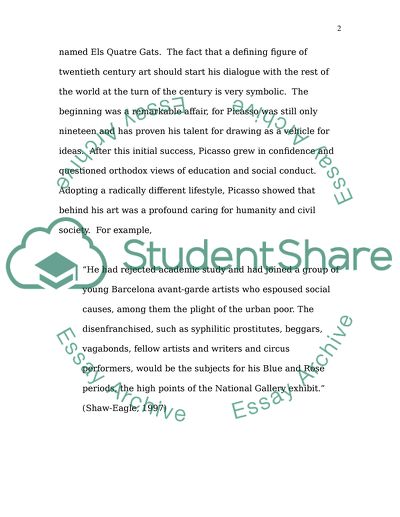Cite this document
(“Pablo Picasso & Cubism Essay Example | Topics and Well Written Essays - 1500 words”, n.d.)
Retrieved from https://studentshare.org/visual-arts-film-studies/1547873-pablo-picasso-cubism
Retrieved from https://studentshare.org/visual-arts-film-studies/1547873-pablo-picasso-cubism
(Pablo Picasso & Cubism Essay Example | Topics and Well Written Essays - 1500 Words)
https://studentshare.org/visual-arts-film-studies/1547873-pablo-picasso-cubism.
https://studentshare.org/visual-arts-film-studies/1547873-pablo-picasso-cubism.
“Pablo Picasso & Cubism Essay Example | Topics and Well Written Essays - 1500 Words”, n.d. https://studentshare.org/visual-arts-film-studies/1547873-pablo-picasso-cubism.


